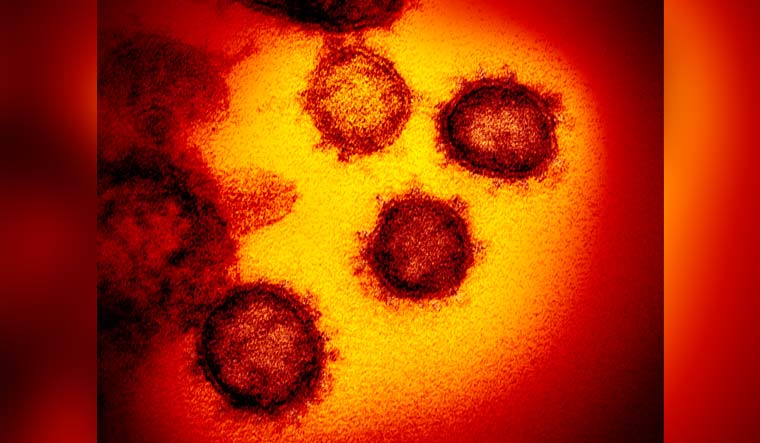A new study, which has not yet been peer-reviewed, claimed that the conditions leading to the coronavirus outbreak mirrored that of SARS (Severe Acute Respiratory Syndrome) in animals that first broke out two decades before, Bloomberg reported. "Since the first reports of a novel SARS-like coronavirus in December 2019 in Wuhan, China, there has been intense interest in understanding how SARS-CoV-2 emerged in the human population. Recent debate has coalesced around two competing ideas: a “laboratory escape” scenario and zoonotic emergence. Here, we critically review the current scientific evidence that may help clarify the origin of SARS-CoV-2," the study noted in its summary.
SARS-CoV-2 shows similarities to the four endemic human coronaviruses, the study claimed. According to the study: "SARS-CoV-2 is the ninth documented coronavirus that infects humans and the seventh identified in the last 20 year. All previous human coronaviruses have zoonotic origins, as have the vast majority of human viruses. The emergence of SARS-CoV-2 bears several signatures of these prior zoonotic events. It displays clear similarities to SARS-CoV that spilled over into humans in Foshan, Guangdong province, China in November 2002, and again in Guangzhou, Guangdong province in 2003. Animal traders working in 2003, without a SARS diagnosis, were documented to have high levels of IgG to SARS-CoV (13 per cent overall and >50 per cent for traders specializing in civets). Subsequent serological surveys found ~3 per cent positivity rates to SARS-CoV related (SARSr-CoV) viruses in residents of Yunnan province living close to bat caves, demonstrating regular exposure in rural locations."
"During 2019, markets in Wuhan–including the Huanan market–traded many thousands of live wild animals including high-risk species such as civets and raccoon dogs. Following its closure, SARS-CoV-2 was detected in environmental samples at the Huanan market, primarily in the western section that traded in wildlife and domestic animal products, as well as in associated drainage areas. While animal carcasses retrospectively tested negative for SARS-CoV-2, these were unrepresentative of the live animal species sold, and specifically did not include raccoon dogs and other animals known to be susceptible to SARS-CoV-2."
"SARS-CoV-2 also shows similarities to the four endemic human coronaviruses: HCoV-OC43, HCoV-HKU1, HCoV-229E, and HCoV-NL63. These viruses have zoonotic origins and the circumstances of their emergence are unclear," according to the study.
Reports earlier had echoed the same views. There is no scientifically validated evidence to support the theory that the coronavirus leaked from a laboratory in China, and more recent, peer-reviewed studies strongly suggest that the virus evolved in nature, a group of scientists wrote in The Lancet journal.
The report published on Monday was compiled by two dozen biologists, ecologists, epidemiologists, physicians, public health experts and veterinarians from around the world.
"We believe the strongest clue from new, credible, and peer-reviewed evidence in the scientific literature is that the virus evolved in nature, while suggestions of a laboratory-leak source of the pandemic remain without scientifically validated evidence that directly supports it in peer-reviewed scientific journals," the authors wrote in the journal.
The same team of scientists had last year dismissed the lab leak idea as a conspiracy theory in a report also published in The Lancet.
The latest report comes as many countries have called for further inquiry into the origins of the coronavirus, including the possibility that it escaped from a lab in the Chinese city of Wuhan, where the first cases were reported in December 2019.
"Allegations and conjecture are of no help as they do not facilitate access to information and objective assessment of the pathway from a bat virus to a human pathogen that might help to prevent a future pandemic," the authors of the report explained.
"New viruses can emerge anywhere It is time to turn down the heat of the rhetoric and turn up the light of scientific inquiry if we are to be better prepared to stem the next pandemic," they noted.
The authors of the report, however, said they welcome calls for scientifically rigorous investigations into the origin of the virus. "To accomplish this, we encourage WHO and scientific partners across the world to expeditiously move to continue and further extend their initial investigation with experts in China and the Chinese Government," they wrote.
They noted that WHO's report from March, 2021 must be considered the beginning rather than the end of an inquiry.




